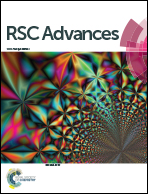Zein bio-nanoparticles: a novel green nanopolymer as a dispersive solid-phase extraction adsorbent for separating and determining trace amounts of azorubine in different foodstuffs
Abstract
For the first time, a new, easy, and green method using zein nanoparticles as a dispersive solid-phase extraction (DSPE) adsorbent has been used for the preconcentration of azorubine (a well-known chemical dye additive) as a model compound in foodstuffs. The monitoring of chemical residues in food and the environment is an important function of countless laboratories around the world. SPE and DSPE are more flexible and efficient than liquid–liquid extraction in terms of simplicity, flexibility in choosing the adsorbent and low consumption of organic solvents. To the best of our knowledge, the use of zein nanoparticles as a dispersive solid-phase extraction material has not been reported thus far. The main advantages of this newly discovered research use of zein arise from four aspects: (A) zein biopolymer is a safe biomaterial that has characteristics that include biocompatibility, biodegradability, and low toxicity; (B) its hydrophobic property and unique solubility result in the easy fabrication of zein nanoparticles; (C) it has relatively suitable stability; and (D) composites or conjugates formed between zein and other compounds such as nanomaterials are easy to fabricate. Several experimental parameters, including the amount of sorbent, extraction time, pH and ionic strength of the sample solution, and desorption conditions, were evaluated. Under optimal experimental conditions, the linear correlation coefficient (r2) was 0.9978 at a concentration level of 0.005–4.500 μg mL−1. The limit of detection was 2.8 ng mL−1 and the relative standard deviations (RSD) for concentrations of 0.5 μg mL−1 and 3.5 μg mL−1 were 0.5% and 1.2% (n = 6), respectively. The present method was employed for the analysis of four different food samples (soft drink, pastel gummies, ice cream, and Smarties) and the recoveries of AZ that were obtained were in the range of 94.6% to 103.2%. The results showed that the proposed method was a green, convenient, and fast method for the determination of AZ as a model compound in food samples.


 Please wait while we load your content...
Please wait while we load your content...